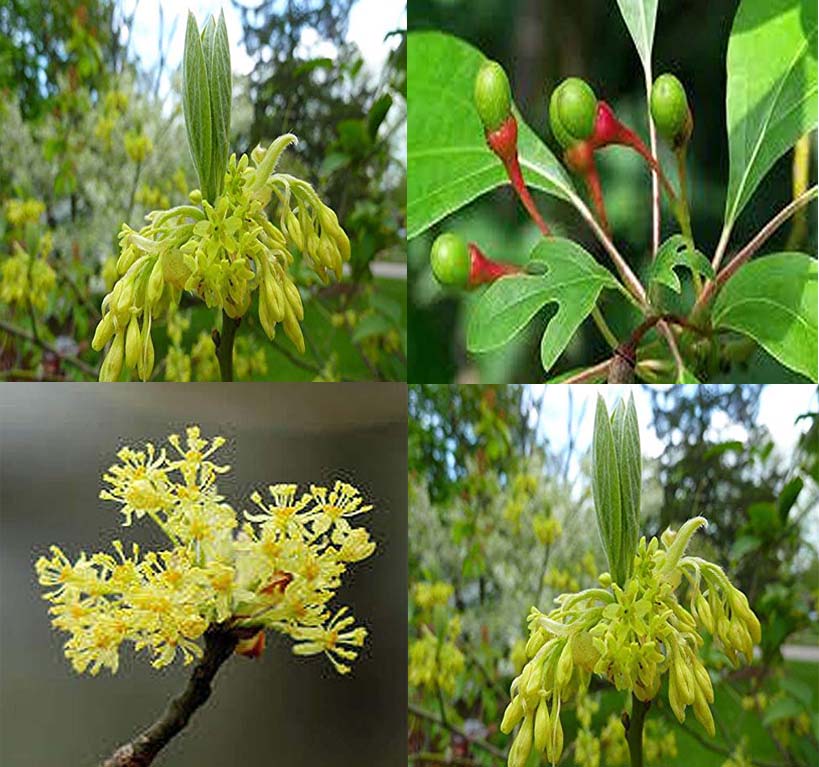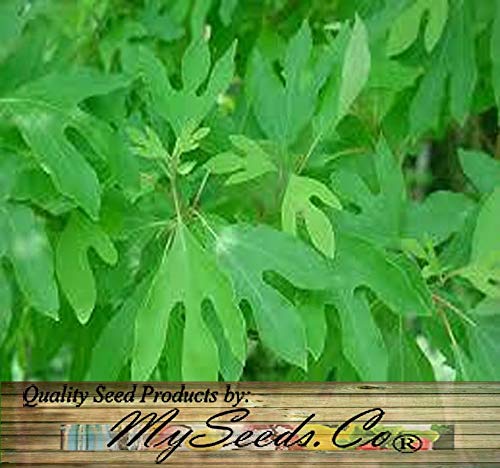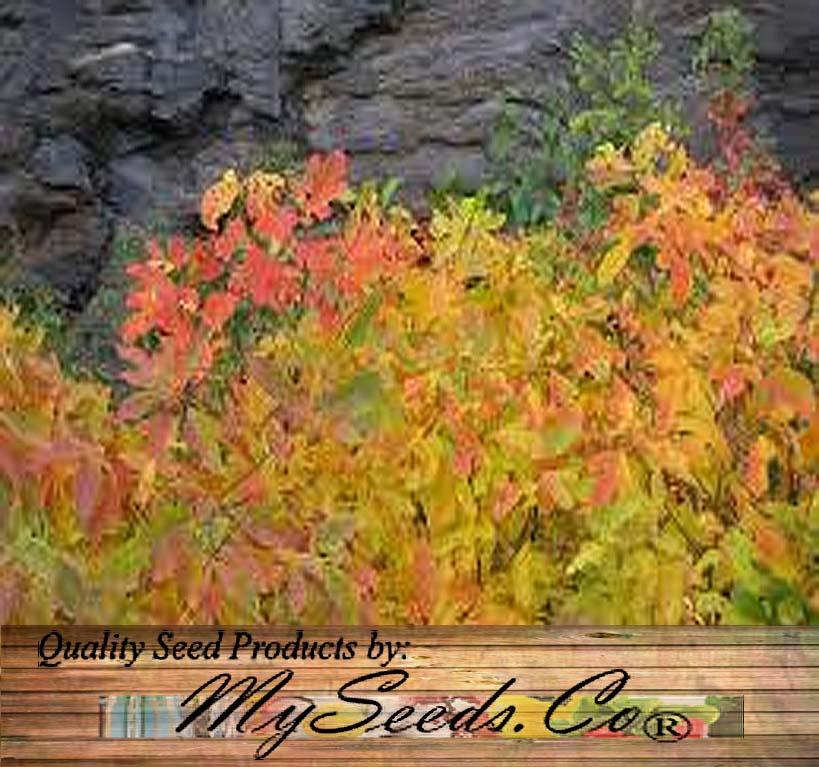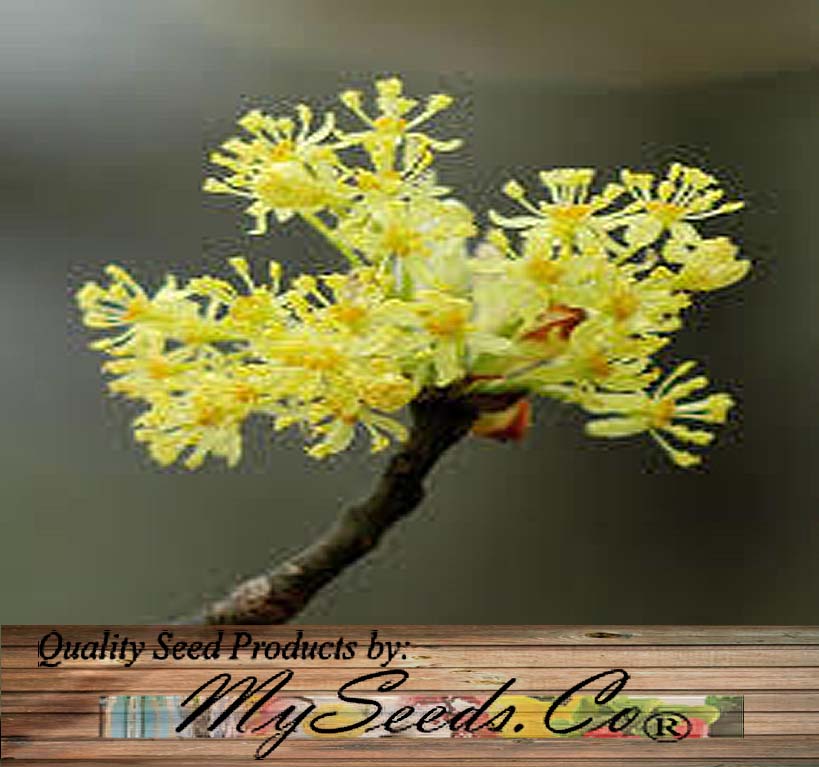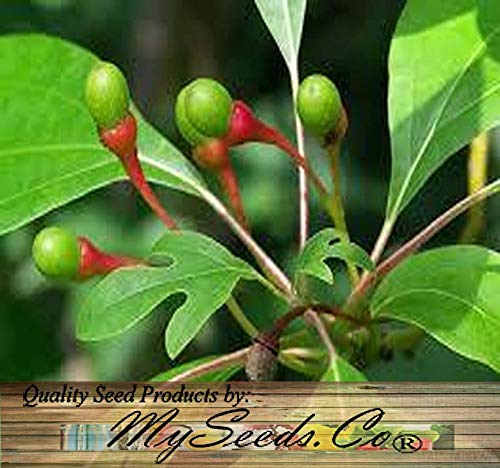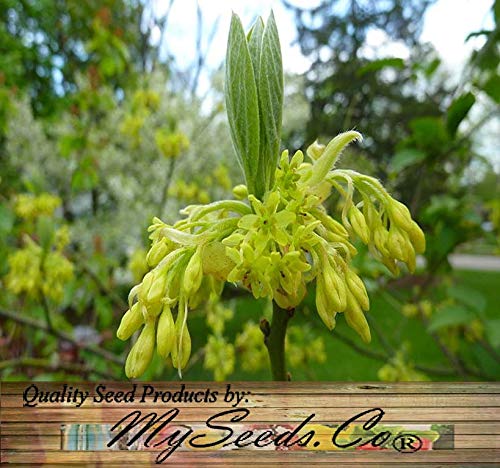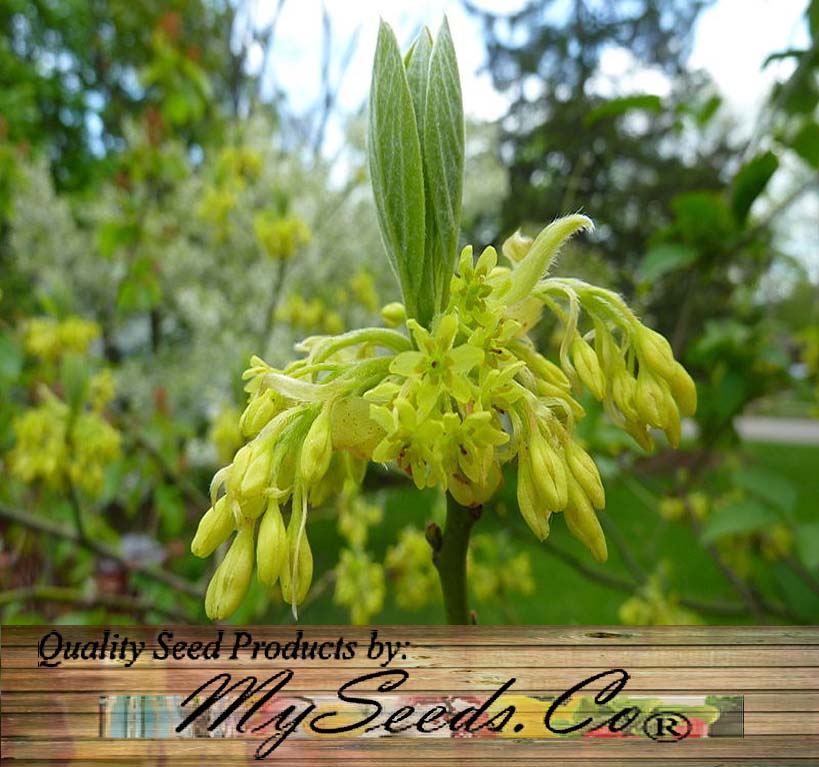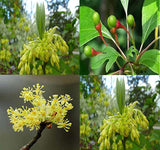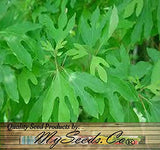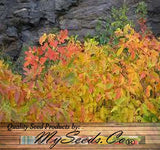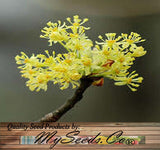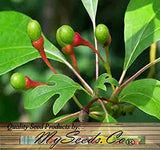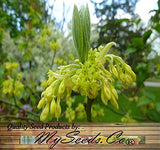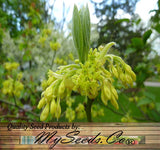Sassafras albidum (Sassafras)
Sassafras albidum (Sassafras) is a deciduous tree or large shrub native to eastern North America. It usually reaches heights of 30 to 60 feet (9–18 meters), though in optimal conditions it can grow as tall as 98 feet (30 meters). The tree is easily identified by its aromatic qualities and its unusual leaves, which appear in three different shapes—simple oval, mitten-shaped, and three-lobed—often all on the same branch.
The foliage is bright green on top and lighter underneath, with leaves measuring 4 to 7 inches long. In autumn, sassafras puts on a spectacular display, with its leaves turning vivid shades of yellow, orange, and red. In early spring, before the leaves emerge, the tree produces clusters of small, yellowish-green flowers. Sassafras is dioecious, so male and female flowers grow on separate trees. When pollinated, female trees bear small, dark blue-black fruits set in striking red stalks, which attract birds.
Mature sassafras trees have thick, deeply furrowed, reddish-brown bark, while the younger branches are smooth and green. Every part of the plant is aromatic and spicy. Sassafras prefers well-drained, acidic to neutral soils and grows best in full sun to partial shade. It spreads easily by sending up root suckers, which can result in dense thickets or colonies. The tree is generally resistant to pests but can develop chlorosis in alkaline soils and is susceptible to laurel wilt disease in certain regions.
This species plays an important ecological role, serving as a host plant for butterfly and moth larvae and providing fruit for birds. Its distinctive leaves, aromatic scent, and brilliant fall colors make sassafras a popular choice for naturalistic gardens and native landscaping.
Botanical Name : Sassafras albidum
Common Name : Sassafras
Height : 30-60 ft
Spread : 25-40 ft
Germination Info : Seed requires 120 days cold moist stratification
Hardiness zone : 4-9
Average seed per ounce : Approx. 300

